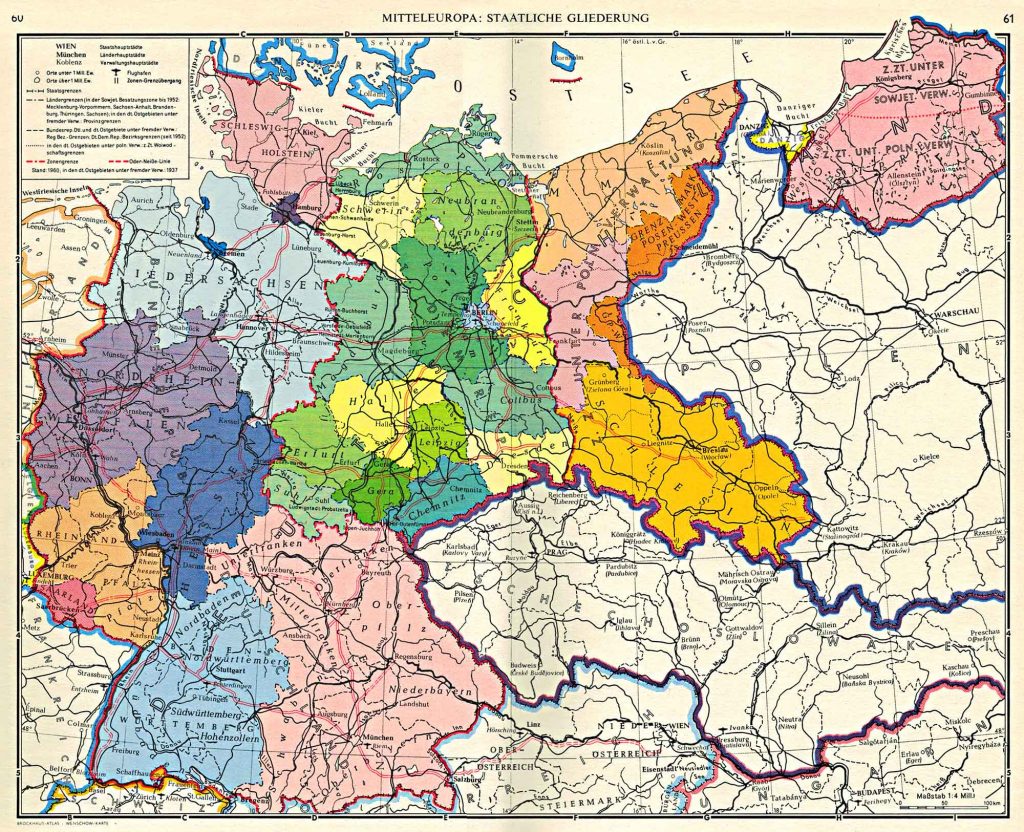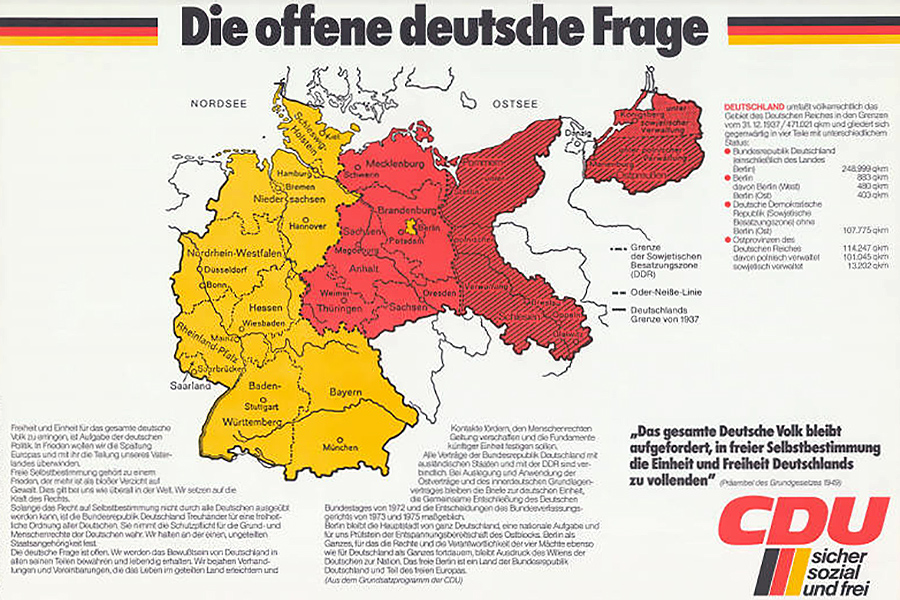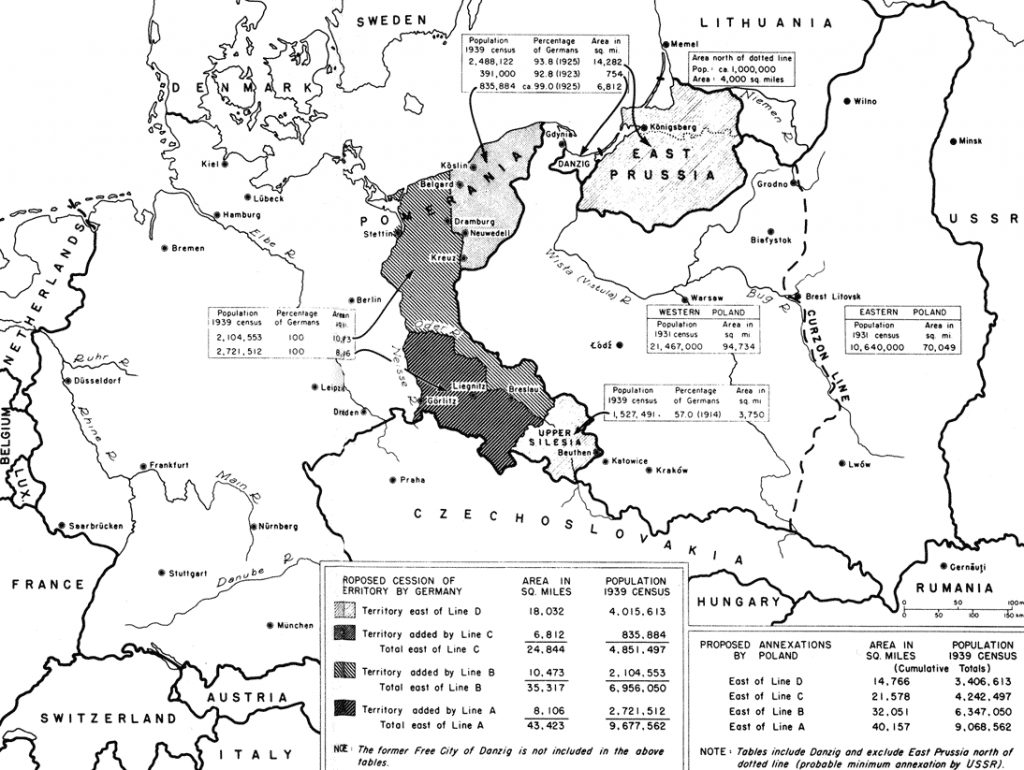Maybe it is my impression, and this has been going on for a long time now, but in the past few months I have received many notifications from German newspapers about increasing demands by the Polish Government for war reparations (see today, five days ago, and see some editorials on the subject by the Berliner Zeitung and Die Welt).
This might seem a quick and easy way of obtaining money for the Polish administration; after all, Greece has been trying to do that since their economic crisis, not the least because of Germany’s strong support of austerity measures during it. The position of Greece, however, is different. There was no exchange between both nations after the war.
According to the Polish Government, before the fall of the Soviet Union Poland was a Soviet ‘puppet’ (their words, not mine), so the Two Plus Four Agreement – and indeed, it is to be understood, all previous treaties regarding reparations – are not legally binding.
However, if that is so, which demands did Germany relinquished to end with insurmountable WWII reparations? That is, which German demands can then be brought to the table again?

Just yesterday a Reddit user posted a typical German atlas from the 60s and 70s, including “Polish-administered lands”. In my experience, German language books tend to show German-speaking territory in what is now Poland without changes from the pre-war situation, even including (especially those up to the 90s) old administrative borders.
In 1970 at the Treaty of Warsaw the current borders were accepted by West Germany and Poland, and West Germany stopped printing their atlases this way. East Germany – also a Soviet ‘puppy’ then, according to the Polish Government – had already accepted the Oder-Niesse line in 1953 after Poland relinquished their demands for reparation in exchange for the eastern German lands.
[EDIT 25 September 2017] I stumbled upon one of the last ‘official’ atlases used in German schools, the Diercke Weltatlas of 1970 (via Reddit), and see also another map of 1969, all of which included the claimed borders. Eastern Poland, on the other hand, would retain modern borders according to these maps (see here and here).
[EDIT 21 October 2017] I found out that the Christian Democrats criticized this Ostpolitik and continued to campaign on what they referred to as late as 1980 as “the open German question”.

Until recently, only the NPD (Germany’s far-right party) had openly supported the idea of returning the eastern territories and the Sudetenland. And these demands are not to be taken lightly, since the party is mainly voted by neighbouring east Germans and populism is on the rise everywhere.

Reparations for mass expulsions of Germans from Poland and the Sudetenland have been mostly repressed, in my experience, by German news outlets and officials alike. Abuse of the east German population is an unpopular subject within the Germans’ general desire to close wounds and go forward. Only rarely could you watch some documentary about the mass expulsions, killings, rape, and violence in general that was seen in post-war Germany (including pre-WWII territories).

This is one of the questions that could be described as officially taboo. And probably for good reason. Like criticising the effects of the Multikulti movement (or the integration of the Turkish population) some twenty years ago, or today for example mentioning the foreign nationality of crime suspects to avoid inciting hate crimes.
However, judging from innumerable maps of German lands and WWII (and alternative history maps set after WWII) that appear in Reddit and DeviantArt, there are a lot of Germans who still regard with nostalgia the territories where their parents or grandparents lived.
In a time of European challenges like Brexit, rising populist parties, Balkanisation trends, and war against religious extremism, you have to understand what kind of new Pandora’s box you are ready to open. I hope Poles understand what their representatives are doing, and are ready for the consequences of repealing these treaties.
Featured image: Typical map of German dialects in the 1930s.